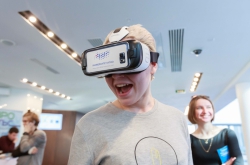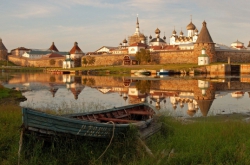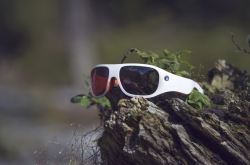In 1714, Peter I’s collections and library were brought from Moscow to St. Petersburg, which is why it is believed to be the year of Kunstkammer's founding. Yet, no one ever found any corresponding document, so there's a good chance that it never existed. What's more, initially the collection was kept in a different place — the Emperor's Summer Garden, as the building on Vasilievsky was yet to be built. The collection became open to general public in 1728 — at first, it consisted of several hundred jars with specimens — fish, birds, reptiles, and fetuses with anatomical deficiencies. Later, other exhibits were added to it — mounts, samples of minerals and herbs, as well as different instruments and machines. It may be hard to imagine, but James Cook's collection of Polynesian everyday items was brought there as early as 1770 — these items were presented to Kamchatka's governor as gratitude for help and hospitality on the expedition's way back to the British Islands. The museum also had Chinese, Japanese, Siberian and many other collections- back when going from St. Petersburg to Moscow took about a week in a carriage, one could come see how people are living on the other side of the planet.
Surely, at first the Kunstkammer was just collecting exhibits, but after the founding of Saint Petersburg's Academy of Sciences it became an academic institution. Many renowned Russian scientists, including Mikhail Lomonosov, worked there; rare and unusual items were brought there for studying and systematization. In the 1830-s, seven independent academic museums were opened on the base of the Kunstkammer: Ethnographic, Asian, Egyptian, Anatomical, Zoological, Botanic, and Peter I's Mineralogical Chamber. Even now, ethnographers and anthropologists continue to work there.
 Kunstkammer.Display. Credit: excursspb.ru
Kunstkammer.Display. Credit: excursspb.ru
In times when there were only a couple of museums throughout the country, museums didn't have any "special" role in addition to just being museums. Yet now, when all kinds of knowledge are accessible via the Internet, museums have to bend with the wind and change their strategies.
So, what is a science museum? A place where they store information about the past? A place that promotes science?A place to conduct research at? It's hard to say for sure. In the USA, museums are "socialized",and act as cultural centers. This is true for some Russian museums, as well, especially local history museums.
"I think that there's no precise definition for a scientific museum. I believe that more than anything, scientific museums are about conducting research — they have research divisions, they organize conferences, and so on. Yet, we can also call museums "scientific" when they promote science by not just showing exhibits, but giving competent explanations to scientific phenomena and mechanisms", comments ArtemSmolin, head of ITMO's Department of Engineering and Computer Graphics.
What's more, many museums actively use modern technologies. For instance, there is a 3D-tour of Kunstkammer, so you can visit it without having to leave your home. There's also a digital archive, where there are descriptions to many of the exhibits. ITMO's specialists shoot 360-degree videos for virtual tours of Kunstkammer and the State Hermitage.
"Now, in the era of information technologies, there are lots of instruments — from social networks to VR headsets — that can be used to enrich museum experiences. Technologies can become a great aid to any museum or exhibition, if they are used correctly. For example, for an Aivazovsky exhibition one can show unique video content about the artist or create a VR-tour which will bring the viewer inside the paintings. This won't get in the way of the exhibition, but have a strong effect on the audience", notes Artem Smolin.
At the same time, museum are no longer places where we only store knowledge of the past — they have become a place where people can learn about a particular science. In the Corpus museum in Netherlands, visitors get inside a model of a human organism and can watch how organs work, as well as learn what is good for them and what's not. Such placesare more of an amusement centers than a museums, but still.
 Corpus museum in Netherlands
Corpus museum in Netherlands
Another new trend is popular science centers, where every visitor can not only see the exhibits, but also try to create something himself and see how it works. Still, museums continue to be sources of credible knowledge. When one comes to a museum, he expects to see something real, something approved by science. Also, many believe that museums help promote scientific worldview.
"From my point of view, scientific worldview has to do with understanding the fundamental laws of reality, as well as the principles of forming scientific cognition based on particular research results. Critical thinking is something different: it is the skill of analyzing different processes and questioning them — but questioning them in a well-argued manner. A science museum can help develop both the scientific worldview and critical thinking, as well as broaden one's outlook. It all depends on who works at the museum, how competent its staff is", concluded the head of Department of Engineering and Computer Graphics.






